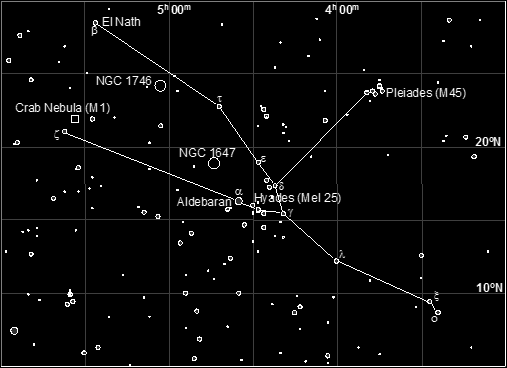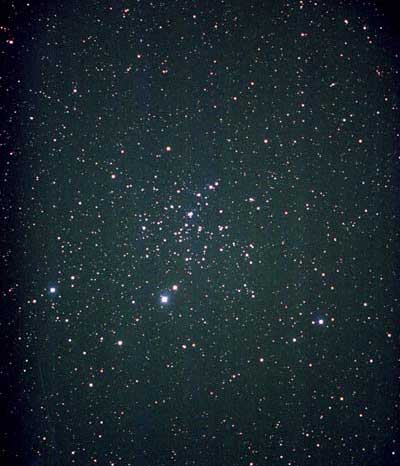Taurus
Taurus is one of the oldest of the constellations. It had special significance in ancient times due to the fact that it lies on the Zodiac. In fact around 4000 BC the Vernal Equinox took place with the Sun in Taurus, so that it was the first constellation of the Zodiac at that time. Its brightest star is first magnitude Aldebaran, the fourteenth brightest star in the heavens. Noticeably orange to the eye, Aldebaran is a giant star lying 65 light years away from us and shining with the light of 150 suns. Aldebaran appears as if it is a member of one of the famous star clusters in Taurus, the Hyades.

NGC1647
Taurus has some more otherwise notable clusters which tend to be overshadowed by these two. The pick of these is possibly NGC1647 which lies in the centre of the constellation, not far from Aldebaran. Another very famous object in Taurus is the Crab Nebula. This was the first object in Messier’s famous catalogue of objects to avoid when searching for comets. His observation of it in 1758 is said to have inspired the production of that opus, although in fact the Crab Nebula was first discovered by the English amateur John Bevis in 1731. At eighth magnitude it is the most conspicuous supernova remnant in the sky, although a telescope is probably required to observe it. There are no European records of its appearance in July 1054 but Chinese accounts tell us that it was observable in daylight for 23 successive days, possibly shining as bright as magnitude -6 at its maximum.
Finally it is worth taking a look at the variable star Lambda Tauri. This star is an eclipsing binary, very similar to Algol in Perseus, fluctuating between magnitude 3.4 and 4.2 over a period of about 4 days.
POWERPOINT SLIDE SHOW (250 KB)